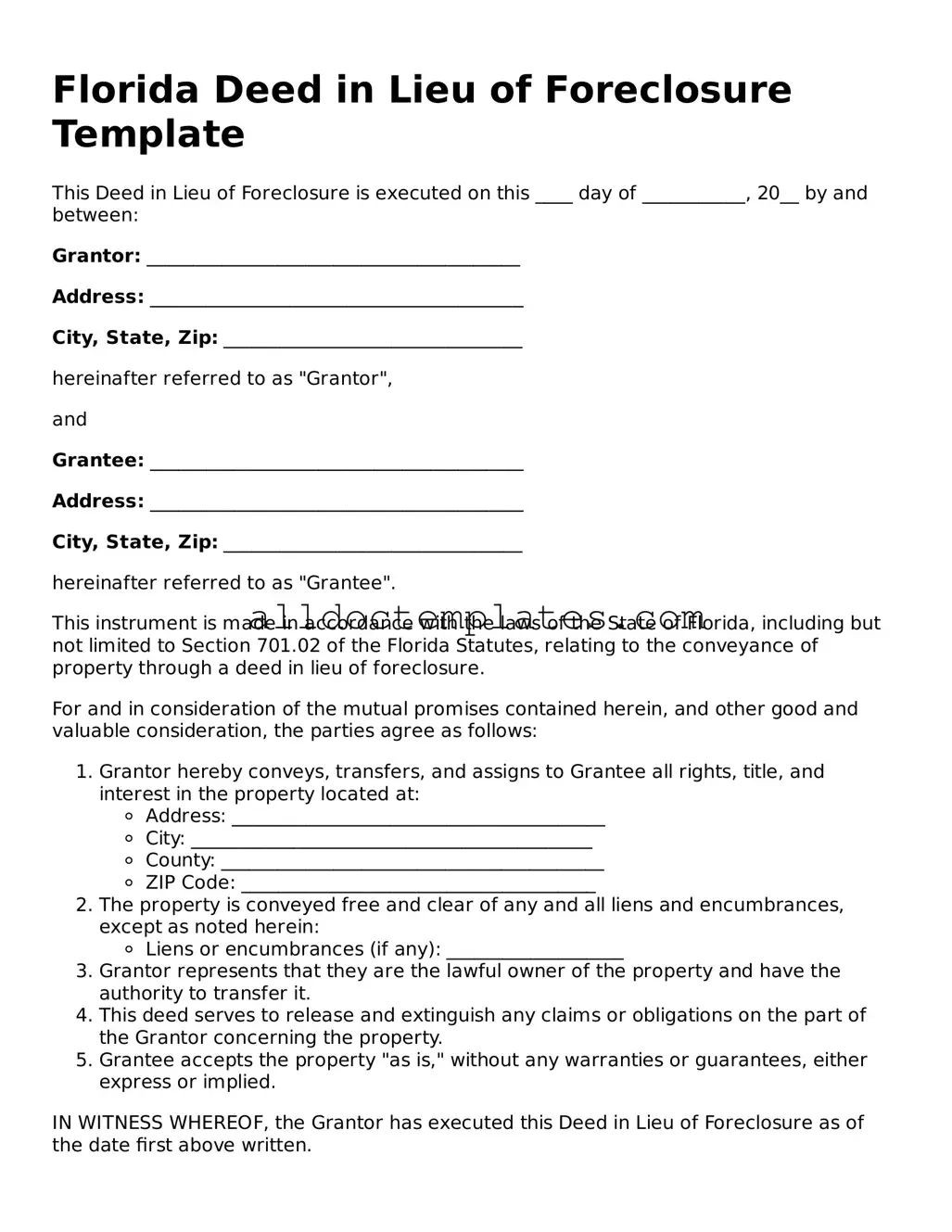Florida Deed in Lieu of Foreclosure Template
This Deed in Lieu of Foreclosure is executed on this ____ day of ___________, 20__ by and between:
Grantor: ________________________________________
Address: ________________________________________
City, State, Zip: ________________________________
hereinafter referred to as "Grantor",
and
Grantee: ________________________________________
Address: ________________________________________
City, State, Zip: ________________________________
hereinafter referred to as "Grantee".
This instrument is made in accordance with the laws of the State of Florida, including but not limited to Section 701.02 of the Florida Statutes, relating to the conveyance of property through a deed in lieu of foreclosure.
For and in consideration of the mutual promises contained herein, and other good and valuable consideration, the parties agree as follows:
- Grantor hereby conveys, transfers, and assigns to Grantee all rights, title, and interest in the property located at:
- Address: ________________________________________
- City: ___________________________________________
- County: _________________________________________
- ZIP Code: ______________________________________
- The property is conveyed free and clear of any and all liens and encumbrances, except as noted herein:
- Liens or encumbrances (if any): ___________________
- Grantor represents that they are the lawful owner of the property and have the authority to transfer it.
- This deed serves to release and extinguish any claims or obligations on the part of the Grantor concerning the property.
- Grantee accepts the property "as is," without any warranties or guarantees, either express or implied.
IN WITNESS WHEREOF, the Grantor has executed this Deed in Lieu of Foreclosure as of the date first above written.
Grantor Signature: _________________________________
Print Name: _____________________________________
State of Florida
County of ________________________
On this ____ day of ___________, 20__, before me appeared ____________________, who is personally known to me or who has produced ________________________ as identification, and who acknowledged that (he/she) executed the same for the purposes therein contained.
Notary Public: _________________________________
My Commission Expires: ________________________
